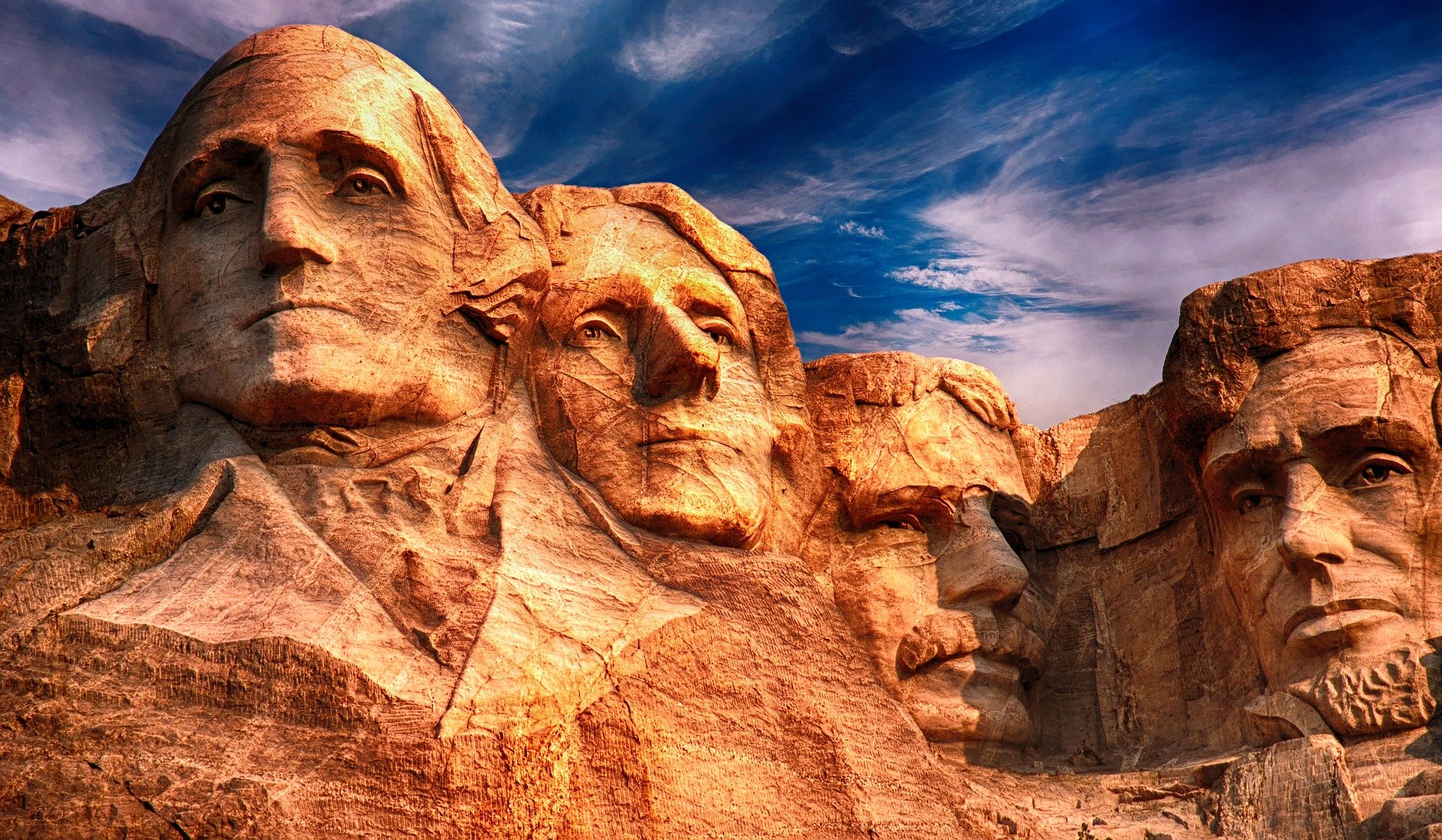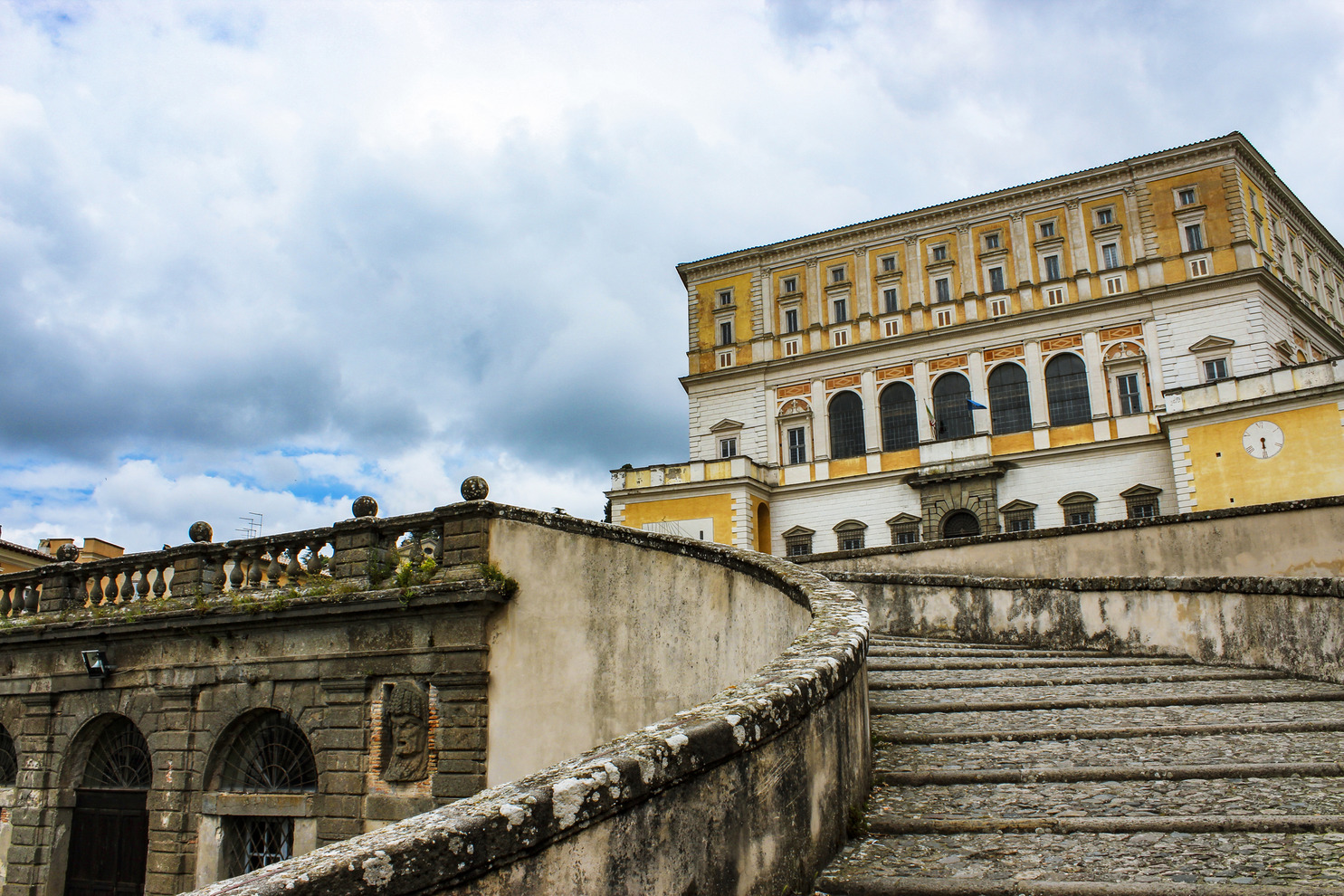Monuments are problematic, especially official state or national monuments. They dictate to the viewer what to think. How do we commemorate without dictating? Mount Rushmore’s intended message does not stop Douglas Gladstone in Carving a Niche for Himself from problematizing one of America’s most famous and visible monuments.
Gladstone unearths a little known fact that has all but been erased from the monument’s history: that Italian immigrant, Luigi Del Bianco, from the northern region of Friuli Venezia Giulia, was the chief carver of Mount Rushmore from 1933-1940. Del Bianco has never been given credit for his role in carving one of America’s most recognized national monuments.
As he explores why Del Bianco’s name was erased from the historical record of the monument, Gladstone exposes the ugly history of American nativism before World War II. In the process, he also problematizes the monument’s meaning further by explaining the role of Native Americans in the monument’s history. Gladstone does not intend to erase the official meaning of the monument. That would be equally dictatorial. Rather, Mount Rushmore becomes a crossroads where several aspects of American history intersect, creating not just a singular meaning of the monument, but a discourse over its interpretation.
The pre-text to Del Bianco’s erasure from the record begins with the anti-immigration sentiment in the U.S at the turn of the last century, which culminated in the passage of the Johnson Reed Immigration Act of 1924. The act’s purpose was to restrict the immigration of “aliens” to the U.S. The act is commonly but incorrectly referred to as the Asian or the Japanese restriction act. However, there were actually three broad “racial” categories refused entry into the U.S.: Asian, Eastern European, and Southern European. To maintain good relations with our two neighbors, Congress did not impose any restrictions on Canadian and Mexican immigration to the U.S.
The act intended to restrict the influence upon the American genetic pool of those “races” who were considered racially and culturally inferior to the Aryan race, a construction of a mythical Northern European historical race. Pseudo-scientists of the era, referred to as eugenicists, in biology, craniology, linguistics, and archeology, offered evidence of this mythical race of Aryans who supposedly inhabited pre-historical Northern Europe. Eugenicists believed that Northern Europeans were the legitimate genetic and cultural heirs of this mythical Aryan race. These pseudo-scientists, mostly from U.S. Ivy League colleges at the time, believed that the U.S. should not allow non-Aryans into the U.S. to interbreed and pollute its original Northern European Aryan gene pool.
Based on this theory, the Japanese and Chinese were targets of earlier restrictions, which were updated in the 1924 act. However, in 1943 and the outbreak of World War II, when the U.S. needed an ally in its war against Japan, it befriended the Chinese and rescinded the restriction on Chinese immigration to the U.S. Politics trumped race. This would not be the last time. The Eastern European category, while it targeted other “races,” was intended to limit Jews from entering the U.S. All but forgotten by immigration specialists is that the Southern European section of the act was designed to limit mainly Italians, by far the largest immigrant group entering the U.S at the time.
Though Northern Italians were considered by many in the U.S. to be culturally superior to their Southern countrymen, Italy, nevertheless, was south of that line where the mythical Aryan race once lived. Italian immigrants, 85% of which came from the South, beginning in 1900 averaged over 200,000 immigrants a year, totaling over 4.5 million by the time the 1924 act was passed. During the war years Italian immigration fell to a trickle. But by 1920 it returned to its pre-war level.
In a panic, in 1921 Congress passed the Emergency Immigration Act that limited Italian “aliens” to 79% of their highest annual pre-war number. When Congress passed the 1924 act, it revised that percentage by further restricting Italian immigration by 98.7%. These restrictions stayed in effect until the 1964 civil rights legislation, which outlawed discrimination based on national origin, race, religion, and sex.
This is the historical context at the root of the Park Service’s decision to erase Del Bianco’s name from the historical record as chief sculptor of Mount Rushmore. As Gladstone explains, officials did not want someone with an Italian last name associated with a monument that was intended to represent America’s highest cultural ideals.
But Goldstone does not stop with the history of American nativism and the erasure of Del Bianco’s name. He further problematizes this iconic monument by pointing out that the land on which it was sculpted belonged to Native Americans, who were never justly compensated by the Federal government. The land originally belonged to the Sioux Nation. The Federal government’s expropriation of the land where Mount Rushmore was carved was a violation of The Fort Laramie Treaty of 1868, which granted the Great Sioux Nation title to the land.
Gladstone points out that Native Americans do not consider “the signers of the Declaration of Independence their ‘Founding Fathers.’” Native Americans call Mount Rushmore the “Shrine of Hypocrisy.’” Gladstone points out that Washington, Jefferson, and Lincoln turned a blind eye to the extermination of Native Americans and the theft of their land.
Further problematizing the monument’s meaning, something that Gladstone does not mention, in addition to unjustifiably incarcerating over 100,000 Japanese during World War II, Roosevelt defined all Italian immigrants as “enemy aliens.” As documented in Una Storia Segreta: The Secret History of Italian American Evacuation and Internment during World War II, edited by Lawrence DiStasi, nearly four hundred Italian immigrants were incarcerated.
In addition, after Mussolini joined the Axis, Vincent Cannato tells us in American Passage: The History of Ellis Island, Ellis Island became a “concentration camp,” holding German, Italian, and Japanese aliens. As Steven Fox documents in The Unknown Internment: An Oral History of the Relocation of Italian Americans During World War II, the Roosevelt administration wanted to intern Italians immigrants, but the war department overruled the decision because Italians were too important to California agriculture. Similarly, the 160,000 Japanese in Hawaii were also not interned because they were too important to the island’s economy. Politics trumped race again.
As a compromise to the internment of Italians, they were required to carry a little pink booklet with them at all times. I have my grandfather’s pink booklet. Among other limitations, the booklet explains that Italian immigrants, under the threat of incarceration, were limited by a daytime curfew and could not own a radio or gun. Also, Italian immigrants were removed from their homes along the California coast from areas that the Federal government felt were strategic areas. Moreover, on both coasts, the Federal government confiscated all fishing boats, from Main to California, owned by Italian immigrants. When they were returned to Italian fishermen after Mussolini’s fall, they were required to have at least one American crew member.
Gladstone justifiably makes the monument the intersection of a discourse over American history. The founding fathers proclaimed the inalienable rights of all men (not women), but they owned slaves. Lincoln may have acted to end slavery, but he was insensitive to the plight of Native Americans. In the process of defeating the evil of Imperial Japan, fascism, and Nazism, Roosevelt presided over a segregated America and initiated domestic war policy acts that discriminated against the Japanese and Italians.
In a revealing addendum to his book, Gladstone published an article in the October 12, 2014 issue of America Oggi in which he complains that the Mount Rushmore National Memorial Park service has banned his book. Gladstone wrote that sixty were purchased but have never been put up for sale in the local book stores. He charges that his fundamental right of free speech has been violated.
Gladstone fills in an important missing page in the history of Mount Rushmore. The real value of his study is that he relocates the monument culturally and socially. He opens a discourse over the interpretation of the monument. We see it as an intersection of several sometimes conflicting historical contexts. As a result, he opens an avenue not to a singular truth, but to the different ways we can read American history. However, based on Gladstone’s article in America Oggi, the park service is safeguarding its official interpretation of Mount Rushmore.
Ken Scambray is the author of A Varied Harvest: The Life and Works of Henry Blake Fuller, The North American Italian Renaissance: Italian Writing in America and Canada, Surface Roots: Stories, and Queen Calafia’s Paradise: California and the Italian American Novel.






























